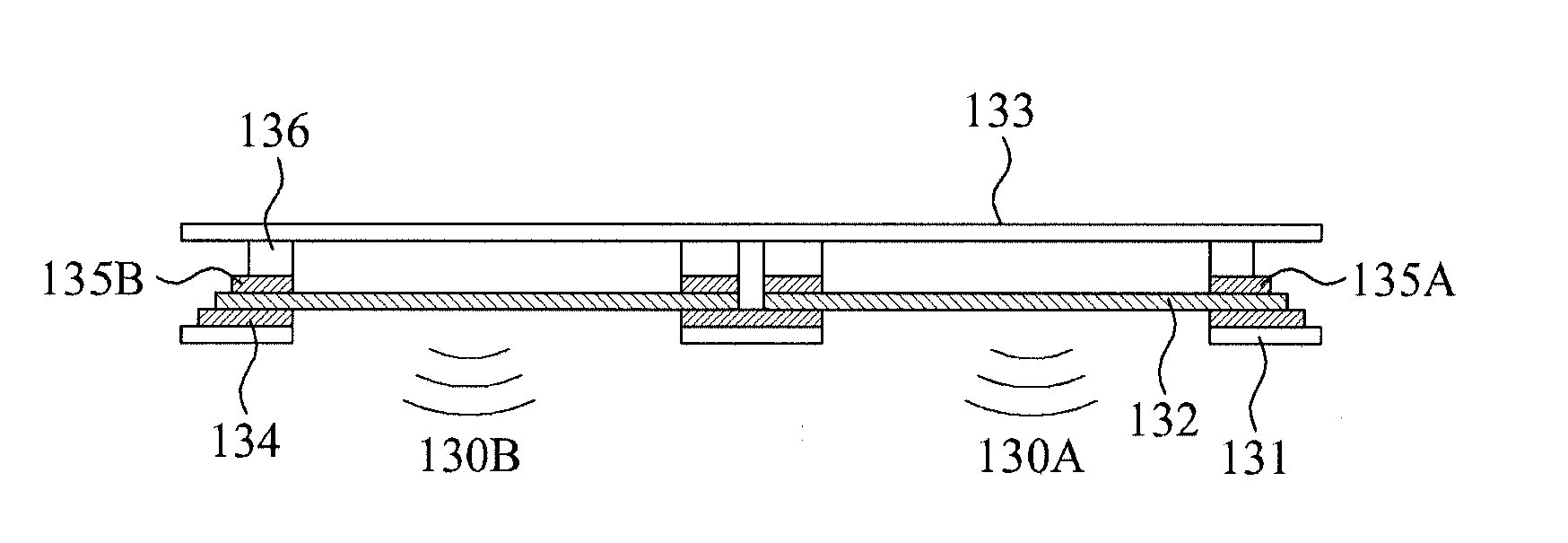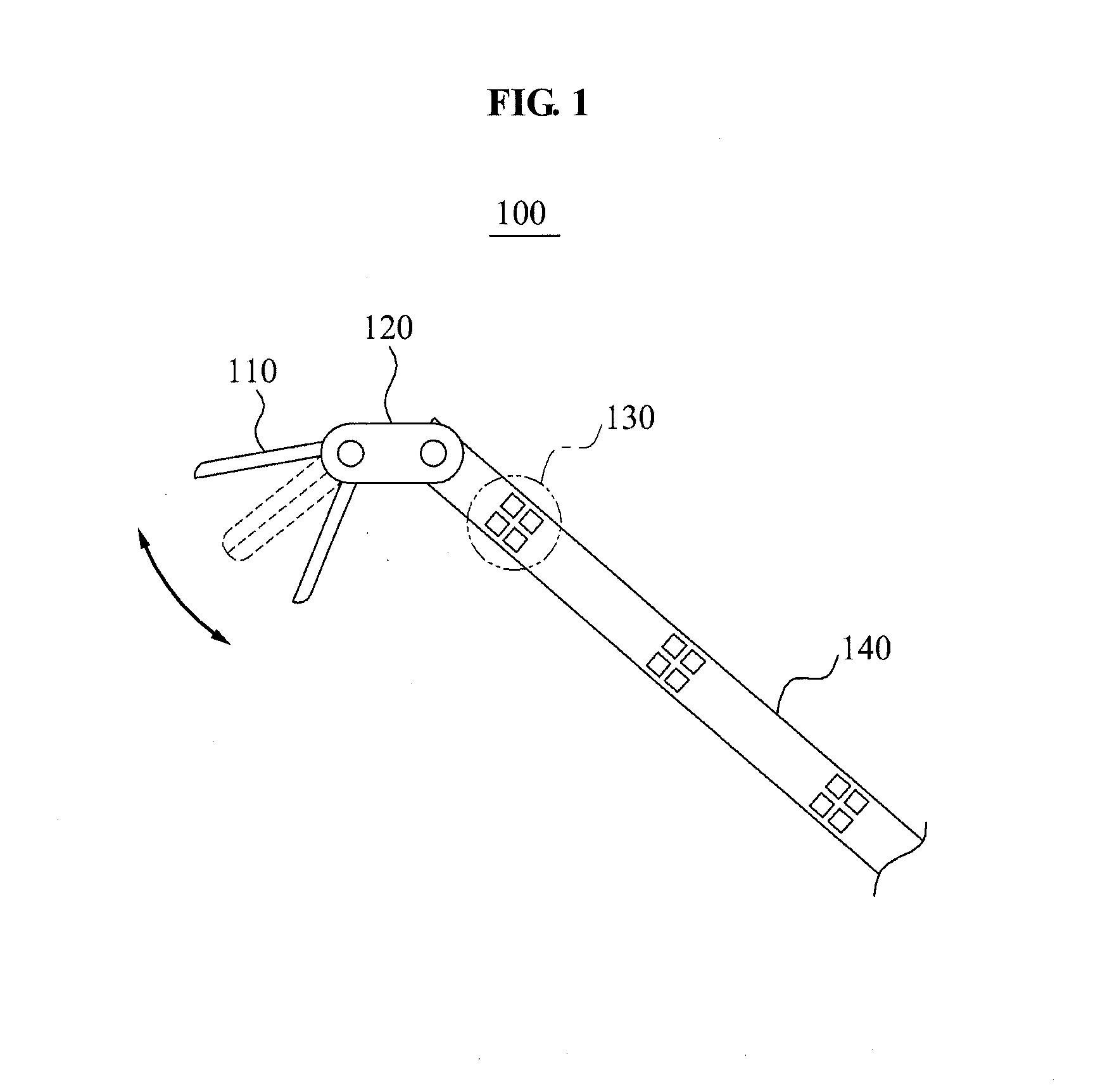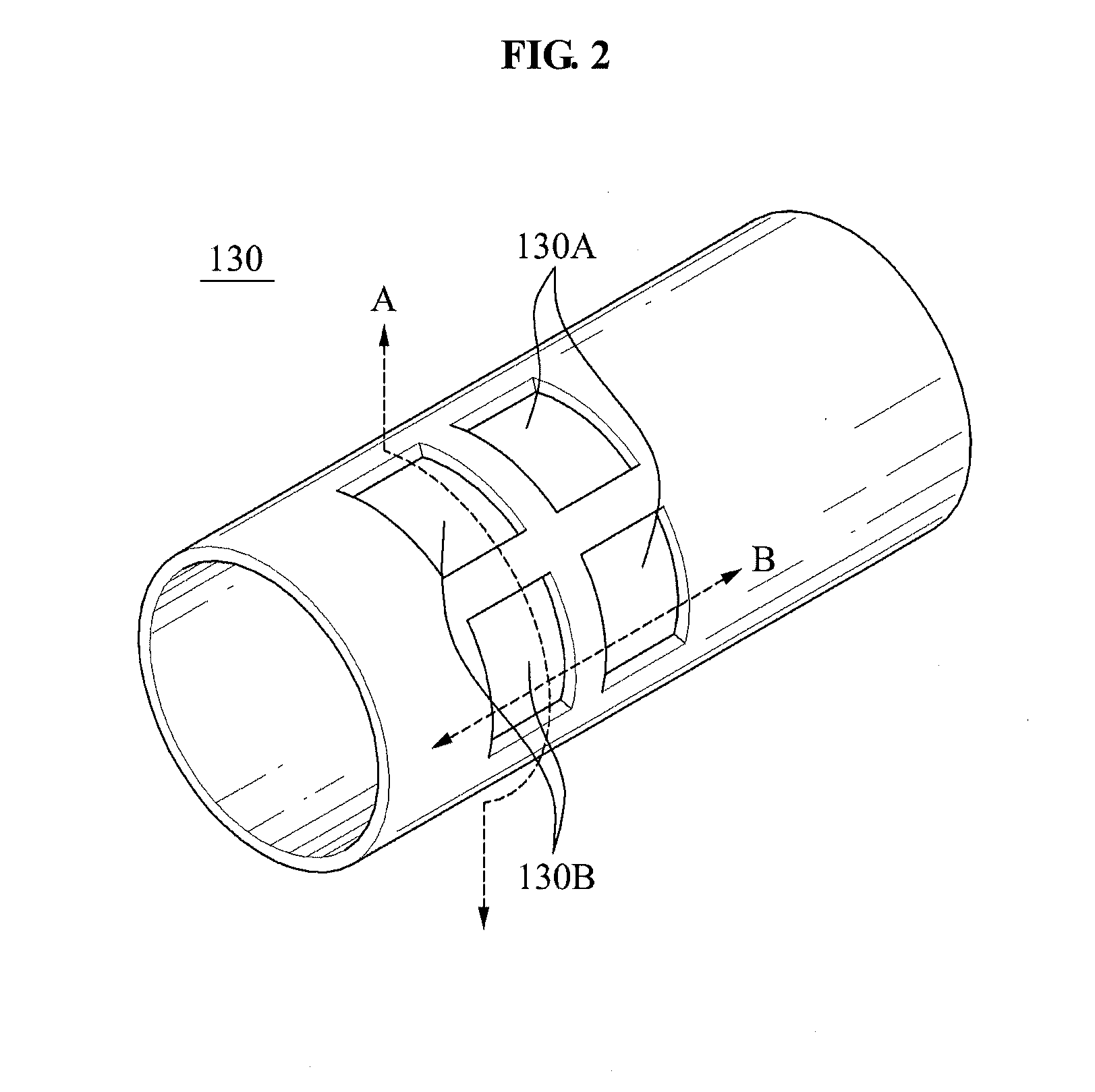Proximity sensor used by an operation robot and method of operating the proximity sensor
- Summary
- Abstract
- Description
- Claims
- Application Information
AI Technical Summary
Benefits of technology
Problems solved by technology
Method used
Image
Examples
Embodiment Construction
[0025]Reference will now be made in detail to embodiments, examples of which are illustrated in the accompanying drawings, wherein like reference numerals refer to like elements throughout. Embodiments are described below to explain the present disclosure by referring to the figures.
[0026]FIG. 1 illustrates a proximity sensor 130 which may be used by an operation robot applied to an instrument of the operation robot according to example embodiments.
[0027]In general, the operation robot may include a master robot and a slave robot. For example, while viewing the inside of a human or animal body displayed on a screen of the master robot, a doctor may perform an operation by manipulating an operation instrument of the slave robot via a controller.
[0028]Referring to FIG. 1, an operation instrument 100 of the slave robot is designed to move with multiple degrees of freedom (DoFs) based on an instrument 110 and a joint 120. The instrument 110 may be provided in various types of shapes dep...
PUM
 Login to View More
Login to View More Abstract
Description
Claims
Application Information
 Login to View More
Login to View More - R&D
- Intellectual Property
- Life Sciences
- Materials
- Tech Scout
- Unparalleled Data Quality
- Higher Quality Content
- 60% Fewer Hallucinations
Browse by: Latest US Patents, China's latest patents, Technical Efficacy Thesaurus, Application Domain, Technology Topic, Popular Technical Reports.
© 2025 PatSnap. All rights reserved.Legal|Privacy policy|Modern Slavery Act Transparency Statement|Sitemap|About US| Contact US: help@patsnap.com



